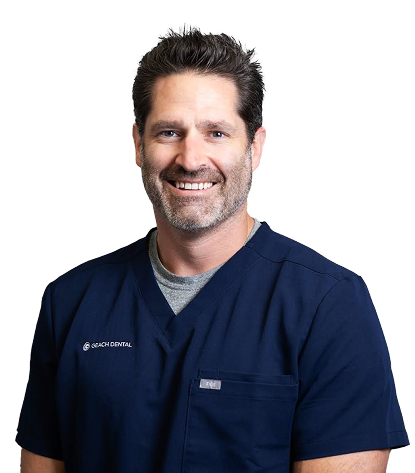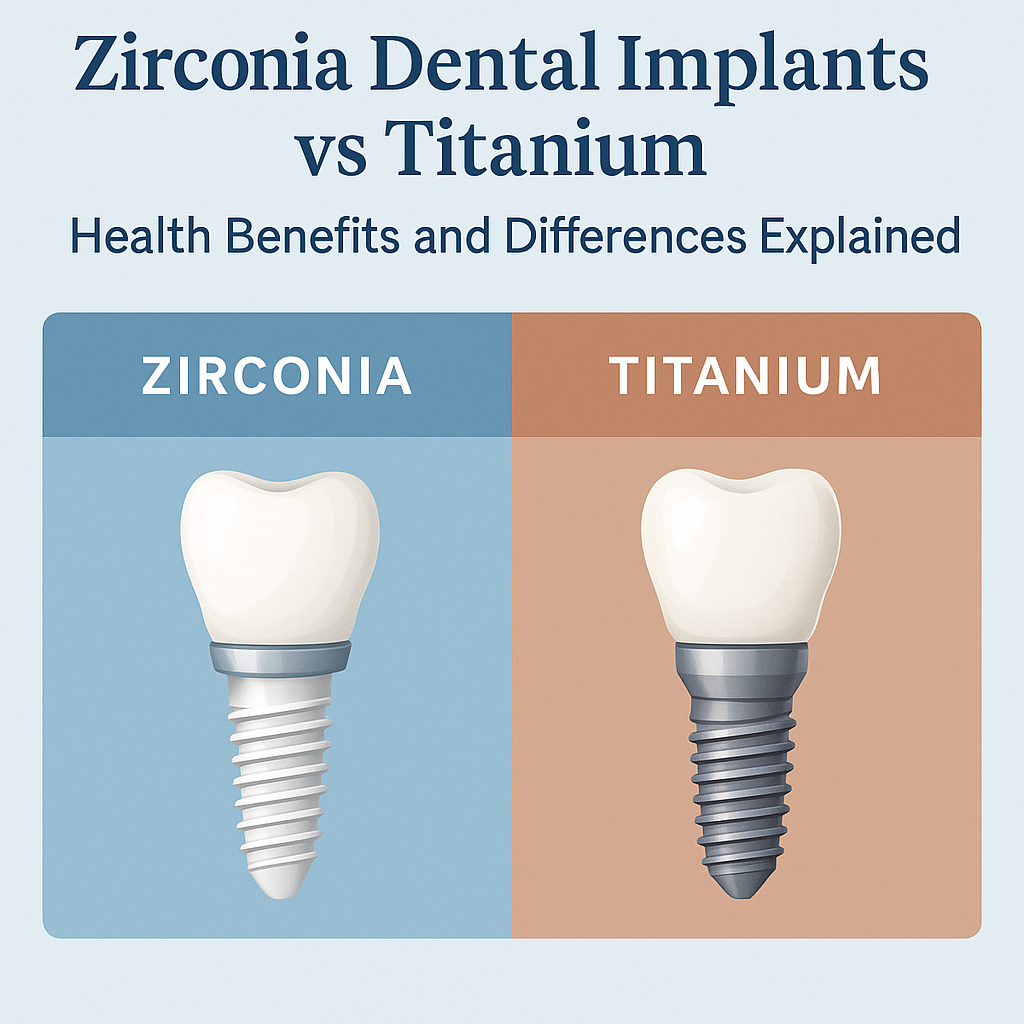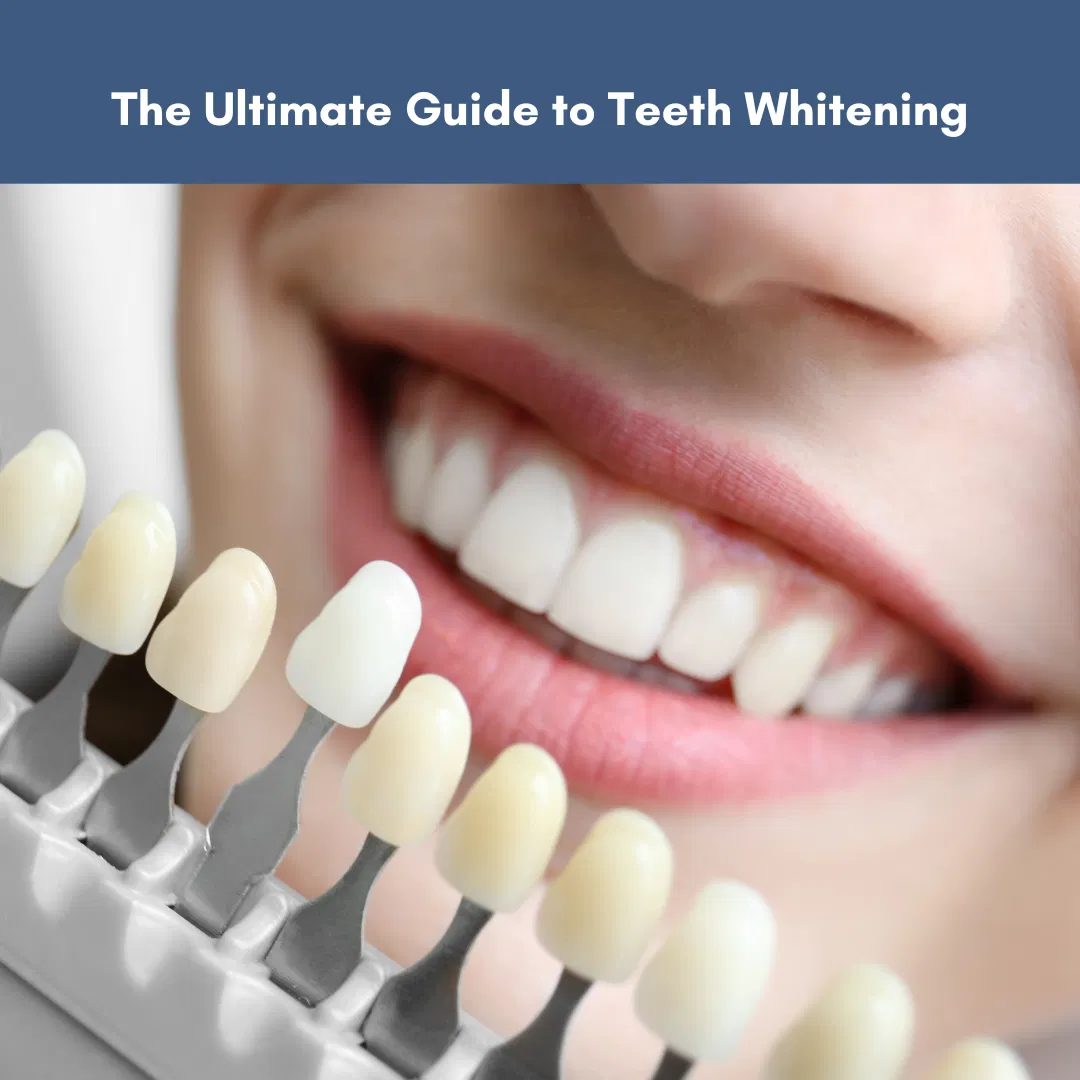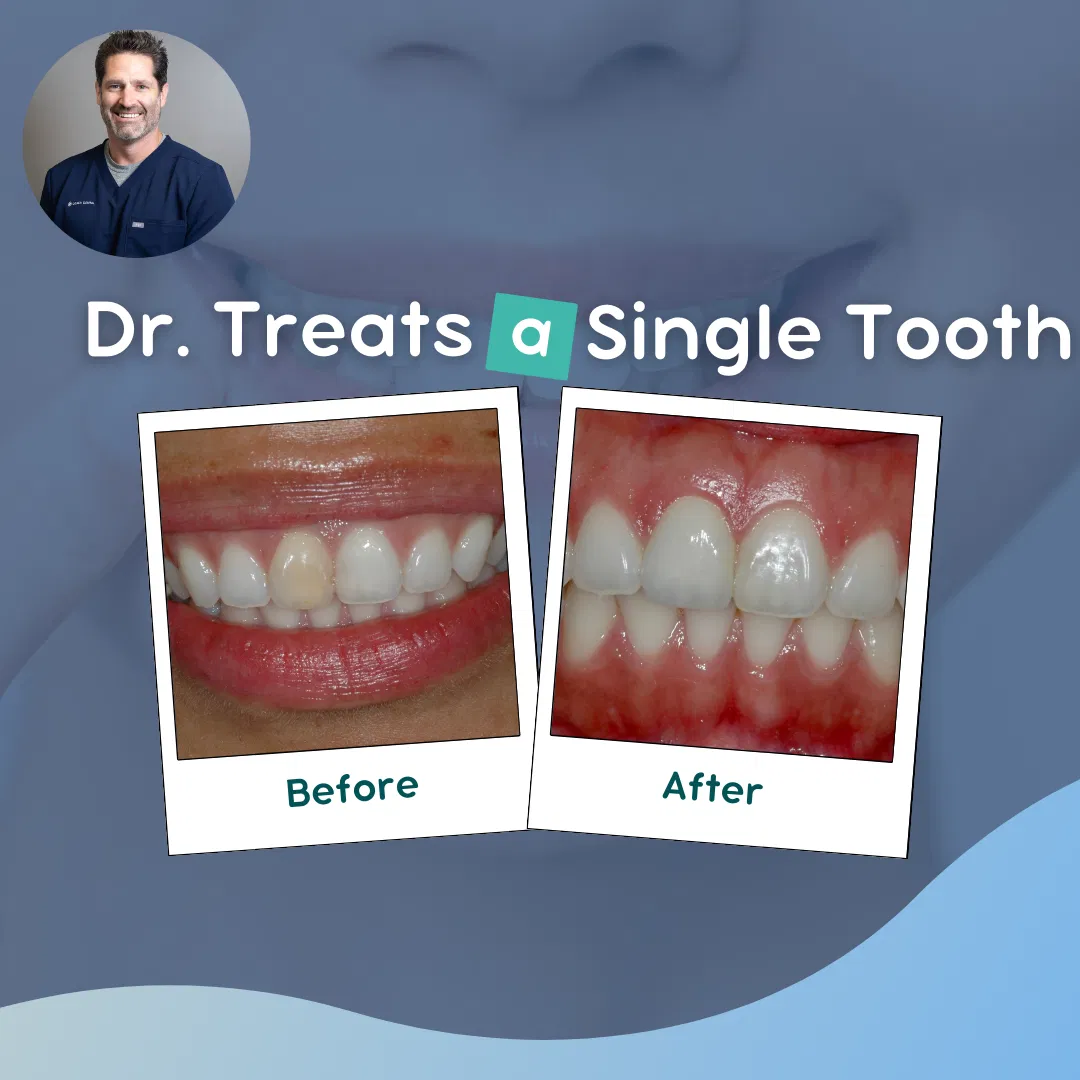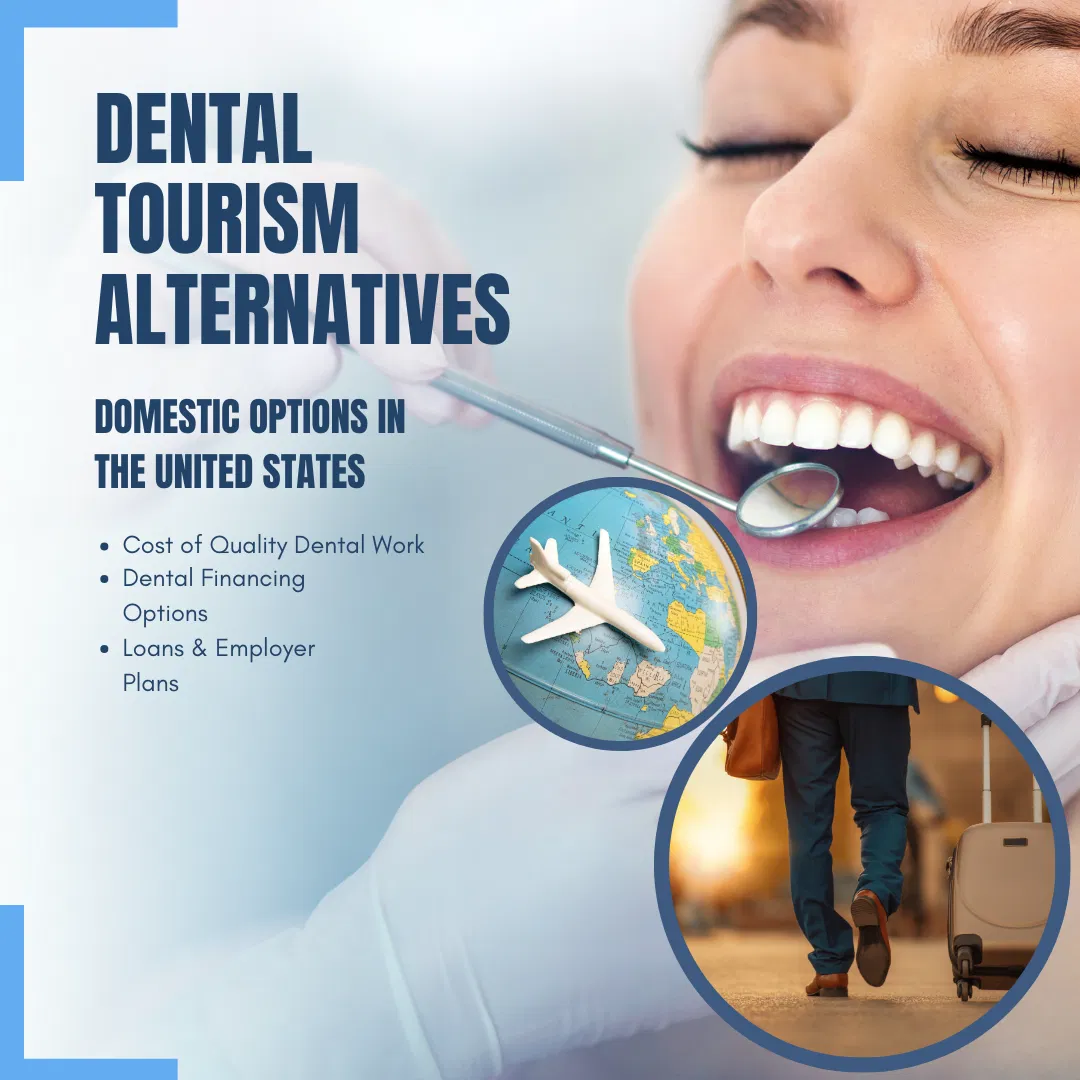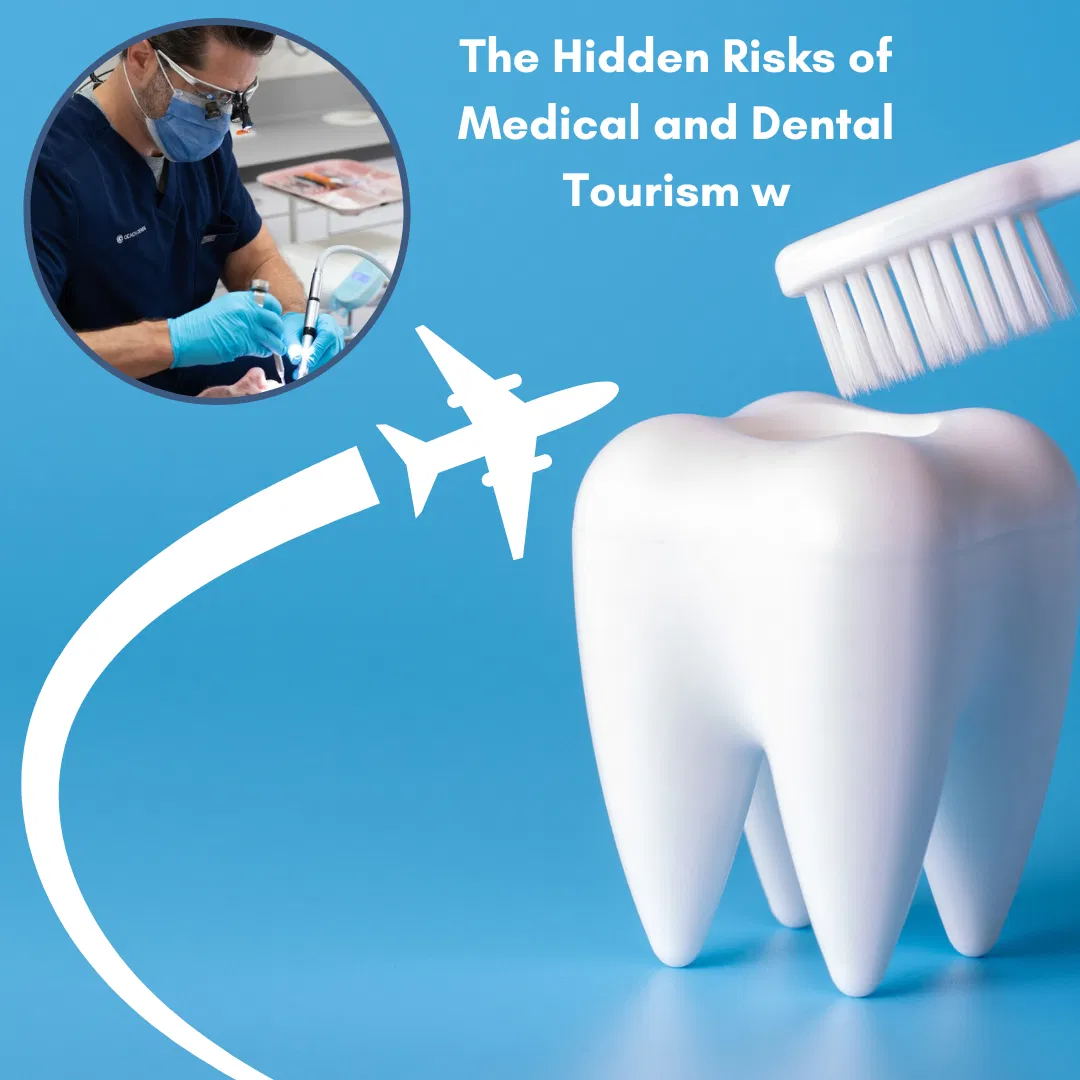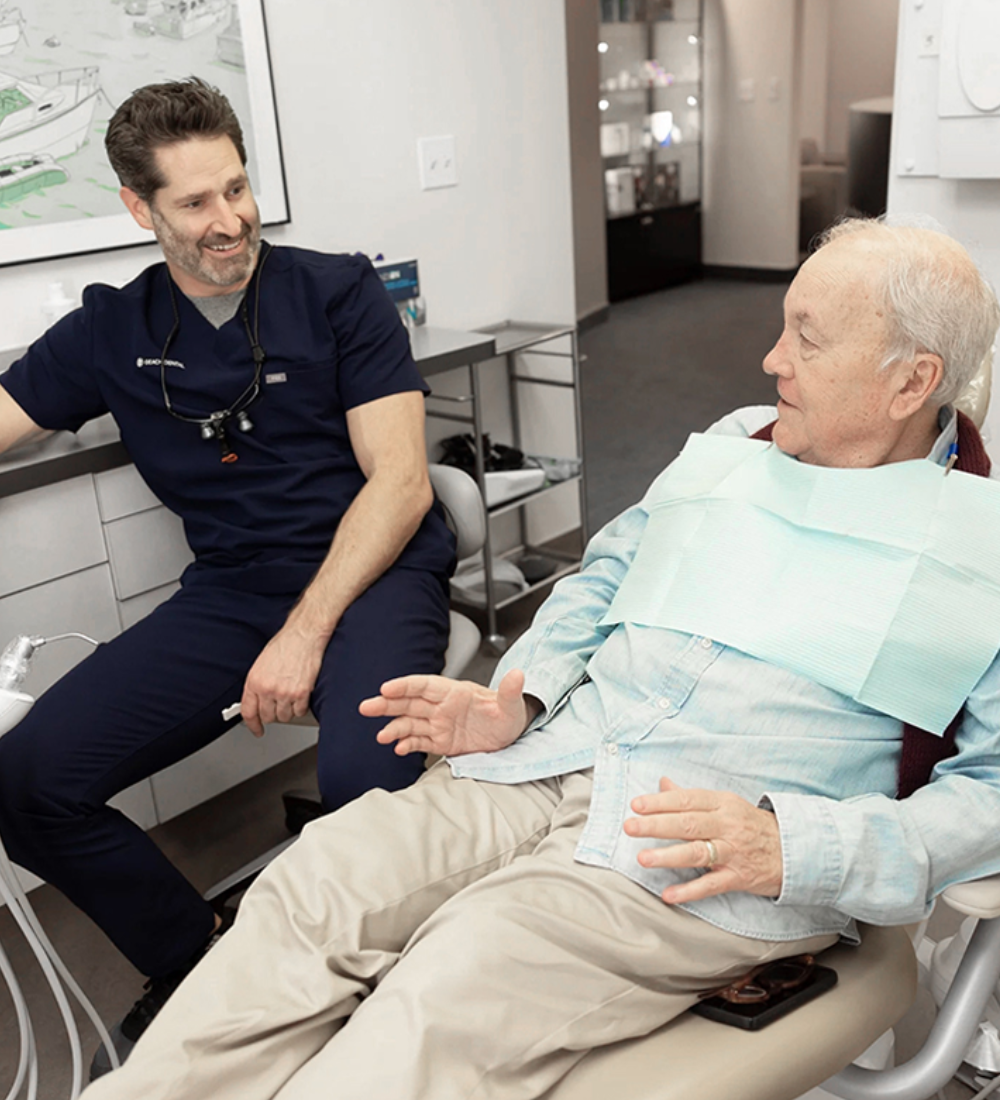In Los Angeles and the United States, affordable dental care has never been in higher demand. At the same time, many patients are drawn to the concept of dental tourism primarily due to the initial cost savings it promises when compared to domestic dental procedures. Dental tourists often seek treatments in countries like Mexico, Costa Rica, Colombia, and Dominican Republic.
However, the allure of cost savings can overshadow essential considerations. The comparison between dental care abroad and quality procedures in the US is not just about advertised costs; it also involves assessing treatment quality, materials, and additional expenses like travel and lodging.
This article explores alternative ways to finance quality dental work within the United States, providing a comprehensive guide for those looking to prioritize their oral health without compromising on quality.

The Cost of Quality Dental Work
Quality dental procedures in the United States come at a price that reflects the high standards of care, expertise, and materials used. Understanding the factors contributing to the cost of quality dental work is essential for making informed decisions about your oral health:
- Professional Expertise: The cost of dental procedures in the US is influenced by the extensive training, education, and expertise of dental professionals. Dentists and specialists undergo rigorous training to provide top-notch care.
- Regulatory Standards: The United States maintains strict regulatory standards and quality control for dental practices. This ensures patient safety, infection control, and compliance with ethical and legal guidelines.
- Quality Materials: Quality dental work relies on premium materials, such as high-grade ceramics, metals, titanium and biocompatible substances. These materials ensure the longevity and effectiveness of dental treatments.
- Cutting-Edge Technology: Dental practices in the US invest in the latest technology and equipment for accurate diagnosis and advanced treatments. This investment in technology can enhance the precision and outcomes of dental procedures.
- Infection Control and Sterilization: Dental practices adhere to rigorous infection control and sterilization procedures to protect patients from cross-contamination and maintain high levels of hygiene.
Investing in quality dental care in the United States offers valuable long-term benefits. These can’t be guaranteed on a short overseas visit with tight deadlines, and any delays will increase cost – that’s the perfect recipe for procedures where corners are cut to save time.
In addition, when things go wrong, overseas dentists know there is less risk of a patient returning to fix mistakes due to the additional travel and accommodation expenses – they’ll leave it to a US dentist.
I’ve experienced this situation with dental implant cases many times. For example, I recently saw a patient who traveled to Mexico for placement of multiple dental implants in the upper jaw to replace missing teeth. Six months after restoration of the implants, the patient presents to my office to evaluate the dental implant bridge. On examination, the dental implant bridge is loose, does not fit properly and the implants show significant bone loss. Ideally, the patient would return to Mexico and have the problems fixed by the treating dentist. This patient did not want to return to Mexico because of the difficult travel and now has lost trust in the dental clinic.
This situation is common and frustrating for many reasons:
- Lost time and money for travel expenses.
- Significant loss of money to try and save the dental implants and remake a new dental implant bridge.
- Recuperating any fees from the failed implant treatment from the original dental clinic is difficult and complicated.
For any extensive dental treatment, finding a board certified prosthodontist in your area has tremendous benefits and can actually save you money:
- Proper Planning: Careful treatment planning of your case is critical for a lasting result. Dental implants need to be placed in proper positions and in good bone volume.
- Close Proximity: Complications can occur. Adjustments to the bite and repair of temporary restorations during healing periods are very common. Having your specialist close is reassuring.
- Durability: Quality dental work is designed to last, reducing the need for frequent replacements and repairs. Only materials and implants are used that are well researched and documented. In addition, most prosthodontists will guarantee their work for a certain period of time.
- Aesthetics: Highly aesthetic dental restorations take time to design and fabricate. Our goal and philosophy is to create restorations that mimic your natural teeth. This is why we have an in-office technician for the highest level of customization.
- Follow-up Care: Extensive dental treatments need regular check-ups. Review of oral hygiene, careful monitoring of bone around dental implants and evaluating the occlusion is critical for long-term success.
- Peace of Mind: Knowing that you can quickly schedule an appointment or ask a question provides peace of mind. Feeling confident that you’ve received top-notch dental care creates trust with your dentist.
Understanding the process and the factors behind the cost of quality dental procedures can help you appreciate the value of investing in your oral health within the United States.
Dental Financing Options
When considering quality dental work in the United States, it’s essential to understand the various financing options available. These options help you manage the costs of dental procedures while ensuring that you receive the high-quality care you deserve. Here are some straightforward and factual explanations of these financing options:
A. Dental Insurance:
Dental insurance is a common way to offset the costs of dental care. Here’s how it works:
- Dental insurance plans
- There are various dental insurance plans, such as Preferred Provider Organizations (PPOs), Health Maintenance Organizations (HMOs), and fee-for-service plans.
- Dental insurance can be obtained through employers or purchased individually.
B. Dental Financing Plans:
Dental financing plans are often offered by dental practices to help patients manage costs:
- These plans allow you to spread the cost of your dental treatment over time, usually with fixed monthly payments.
- Interest rates and terms can vary, so it’s essential to review the specific terms of the plan offered by your dental provider.
C. Health Savings Accounts (HSAs) and Flexible Spending Accounts (FSAs):
HSAs and FSAs are tax-advantaged accounts that can be used for medical and dental expenses:
- Contributions to these accounts are tax-deductible, and the funds can be used to cover qualified dental expenses.
- HSAs are typically associated with high-deductible health plans, while FSAs are offered by employers as part of their benefits package.
D. Personal Loans for Dental Care:
Personal loans can provide flexibility in financing your dental work:
- You can apply for a personal loan through banks, credit unions, or online lenders.
- These loans offer a lump sum amount that can be used to cover your dental expenses, and you repay the loan over time with interest.
E. Crowdfunding and Fundraising:
Recently, in certain situations, individuals have even turned to crowdfunding platforms to raise funds for dental procedures:
- Websites like GoFundMe or Kickstarter allow you to create a fundraising campaign to seek financial support from friends, family, and strangers.
- Crowdfunding can be a viable option when facing extensive dental costs, and allows friends and family to contribute to your dental health..
F. Employer-Sponsored Dental Plans:
Some employers provide dental plans as part of their benefits package:
- These plans often cover a portion of dental expenses and can be a cost-effective way to access quality dental care.

Personal Loans for Dental Care
Personal loans can be a valuable financing option for individuals seeking to finance quality dental work. Here’s how personal loans can be used and the advantages and considerations associated with this approach:
Using Personal Loans for Dental Care:
- Lump Sum Funding: Personal loans provide a lump sum amount, which can cover the full or partial cost of your dental procedure. This lump sum can be used to pay for treatments, including but not limited to dental implants, orthodontics, or cosmetic dentistry.
- Flexible Repayment: Personal loans typically offer flexible repayment terms, allowing you to choose a repayment period that aligns with your budget. This flexibility can help you manage the financial impact of the dental procedure.
Advantages of Using Personal Loans:
- Quick Access to Funds: Personal loans often have a straightforward application process, and once approved, you can access the funds relatively quickly. This can be especially helpful when you have an urgent dental issue or wish to schedule your treatment promptly.
- No Collateral Required: Personal loans are typically unsecured, meaning you don’t need to provide collateral, such as your home or car, reducing the risk associated with the loan.
- Predictable Payments: With a fixed interest rate and set repayment schedule, personal loans offer predictability. You’ll know exactly how much you need to repay each month, making it easier to budget for your dental expenses.
5 Things to Consider When Opting for Personal Loans:
- Interest Rates: Personal loans may come with interest rates varying based on your credit score and the lender. It’s essential to compare rates from different lenders to secure the most favorable terms.
- Repayment Terms: While personal loans offer flexibility, it’s crucial to choose a repayment term that aligns with your financial situation. Longer terms may result in lower monthly payments but higher overall interest costs.
- Credit History: Your credit history plays a significant role in loan approval and the interest rate you receive. Maintaining a good credit score can help you secure better loan terms.
- Debt Management: Before taking out a personal loan, consider your financial obligations. Ensure that you can comfortably manage the loan payments along with your other expenses.
- Loan Origination Fees: Some lenders may charge origination fees when processing the loan. Be aware of any additional fees and factor them into your cost calculations.
Personal loans offer a flexible and accessible means of financing quality dental work. By carefully evaluating interest rates, repayment terms, and your financial situation, you can make an informed decision to support your oral health and well-being.
Crowdfunding and Fundraising
Crowdfunding platforms offer a lifeline to people comfortable with social media and online platforms, making quality dental care accessible to more individuals. In this section, we will delve into the concept of using crowdfunding for dental expenses and highlight the benefits it brings to this social media-savvy group.
Who Might Benefit from Crowdfunding?
- Tech-Savvy People: Crowdfunding is ideal for those at home with social media and online platforms – typically Millenials and Gen Z-ers. It provides an unorthodox means of obtaining financial support for dental care in the digital age they’ve grown up with.
- People with Immediate Dental Needs: Dental emergencies don’t wait, and crowdfunding can provide swift financial assistance for those facing urgent dental issues.
- People Seeking Specialized or Cosmetic Dentistry: People desiring specialized treatments, such as orthodontics or cosmetic dentistry, can use crowdfunding to achieve their dental goals.
Benefits of Crowdfunding for Dental Care
- Community Support: Crowdfunding taps into the power of online communities, enabling people to receive support from friends, family, and even compassionate strangers via digital platforms.
- Accessible Financial Assistance: Crowdfunding eliminates traditional financial barriers, making quality dental care more accessible and immediate.
- Timely Treatment: Dental issues can worsen over time, affecting oral health and overall well-being. Crowdfunding provides a means to secure prompt treatment.
- Customized Campaigns: Fundraisers can tailor their online campaigns to their needs and goals, ensuring their stories resonate with potential donors.
By embracing crowdfunding through digital channels, tech-savvy people can access the compassion and generosity of their loved ones and online communities, enhancing their ability to obtain quality dental care when they need it most.
Employer-Sponsored Dental Plans
Employer-sponsored dental plans are crucial in providing employees with quality dental care. In this section, we will explore the benefits of these plans and how they facilitate employees in securing high-quality dental treatment.
Benefits of Employer-Sponsored Dental Plans
- Financial Support: Employer-sponsored dental plans often cover a portion of dental expenses, including preventive care, basic procedures, and sometimes major treatments. This financial support alleviates a part of the cost burden for employees.
- Preventive Care Focus: These plans emphasize preventive dental care, encouraging employees to attend regular check-ups and cleanings. Preventative maintenance not only maintains oral health but also minimizes the need for costly restorative treatments.
- Network of Dentists: Employer-sponsored plans typically have a network of approved dentists, ensuring that employees can access reputable, qualified professionals. This guarantees that they receive quality care.
- Budget Predictability: With regular premium payments, employees can budget for their dental expenses consistently. This predictability aids in managing costs while prioritizing oral health.
- Wellness and Productivity: Good oral health is linked to overall wellness and productivity. Employees with access to dental plans are more likely to maintain their oral health, reducing absenteeism due to dental issues.
How Employer-Sponsored Dental Plans Help Employees
- Affordable Access: Employees can access dental care at a reduced cost compared to paying for services out of pocket or purchasing an individual dental insurance plan.
- Convenience: Employer-sponsored plans are usually easy to enroll in and manage, offering the comfort of a workplace benefit.
- Comprehensive Coverage: These plans often cover a range of dental services, from routine check-ups to complex procedures, ensuring employees have access to comprehensive care.
- Preventive Emphasis: By encouraging regular dental check-ups and cleanings, employer-sponsored plans prioritize preventative care, reducing the likelihood of employees facing costly dental issues in the future.
- Quality Assurance: The network of approved dentists ensures that employees receive care from qualified professionals, promoting treatment quality.
Employer-sponsored dental plans not only alleviate the financial burden of dental care but also emphasize the importance of preventive dentistry. They empower employees to maintain oral health and access quality dental treatment, ultimately contributing to overall wellness and job productivity.
Conclusion
In summary, this article has highlighted the importance of exploring financing options for quality dental work in the United States.
By understanding the factors and financing options available, you can make informed decisions to prioritize your oral health without compromising quality. Quality dental work within the United States is accessible and reliable via the options we’ve described, offering lasting benefits and peace of mind.
If you’re wondering how to finance your dental work and are considering whether it’s time to vacation abroad to fix your smile, the advanced knowledge and specialized expertise of our prosthodontic team at Geach Dental, located in Downtown Los Angeles and Laguna Niguel, Orange County, are here to help ensure you get the healthy and attractive look you deserve.
Unlike treatment centers abroad, we’ll work with you to find the best way to finance your new smile – right here in Southern California.
Call us today at (213) 622-3339 or click here to schedule a consultation. Your dental wellness is our top priority, and your journey towards a healthier smile starts here!
ABOUT THE AUTHOR: Meet Dr. Adam Geach, distinguished prosthodontics specialist and owner of Geach Dental. His dental education includes Harvard School of Dental Medicine and the University of Connecticut, where he earned a D.M.D. and an M.D.Sc. in Prosthodontics, respectively. Dr. Geach holds Diplomate status with the American Board of Prosthodontics, underscoring his exceptional expertise in dental care.
At his clinics in Los Angeles and Laguna Niguel, Dr. Geach offers a wide range of services, from cosmetic treatments to full-mouth reconstructions, all delivered with a focus on personalized patient care.Take the first step toward your ideal smile and improved oral health by clicking here.


